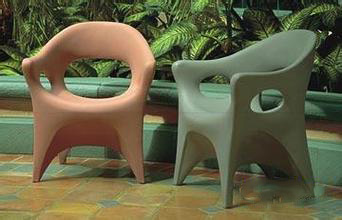It’s common to use the auxiliary agent during rotomolding processing, and the most frequently used in the releasing agent.
The releasing agent plays a significant role in the quality of rotomolding product, therefore, it’s essential to choose the appropriate releasing agent.
There are three kinds of releasing agent which are commonly used, permanent releasing agent, semi-permanent releasing agent and disposable releasing agent. Of course, in order to ensure the right dimension variations of rotomolding products, some manufacturers will give up using the releasing agent sometimes.
No matter which kind of releasing agent will be chose, their function is the same: to form a lubricous membrane in the cavity of rotomolding molds and reduce the products’ adsorption force to the surface of molds.
Generally, there are two kinds of permanent releasing agent: Teflon and thermosetting powder. Using method: clean the surface of rotomolding mold, then spray a layer of Teflon coating or other thermosetting powder, the coating will be solidified in certain time and form the protective membrane. Due to characteristics of Teflon, the coating is almost permanently in the molds.
Teflon coating has many advantages, such as heat resistance, slip resistance, moisture resistance and anti- corrosion resistance. Due to these advantages, the Teflon used to be the first choice as rotomolding releasing agent. However, with the growing development and the increasing application of rotomolding products, market has higher requirements for precision of rotomolding products, the shortcomings of Teflon is gradually emerging. Firstly, after using Teflon, it’s hard to ensure the dimensional variations for Teflon enlarge the shrink degree of rotomolding products. Especially for the combined products, it’s more difficult to ensure the accuracy of dimensional variations. Secondly, when the Teflon coating is damaged, it’s difficult to repair partially, the only method is to do blasting and spraying Teflon coating again.
The semi-permanent releasing agent has the same working principle as the permanent releasing agent, but is easier to operate. The representative is the Chem-Trend releasing agent. This kind of agent is liquid and will form a protective membrane after being sprayed on the molds. And the releasing effect can be last for many times. The disadvantage is that the releasing agent should be sprayed regularly, and the advantage is the low shrinkage on the rotomolding products and easy to control the accuracy.
There are two types of disposable releasing agent. The one type is the liquid that can be directly applied to the surface of molds; representatives are dimethicone and liquid paraffin. The working principle is to form a solid membrane which has the same function as releasing agent in high temperature. The other one is the additive, which should be mixed with the raw material according to certain proportion. Representatives are stearic acid salts, PE wax and lubricants. Stearic acid can cause the shrinkage of rotomolding product that reach the similar effect as releasing agent, while the PE wax can form a lubricant layer on the surface of mold.
